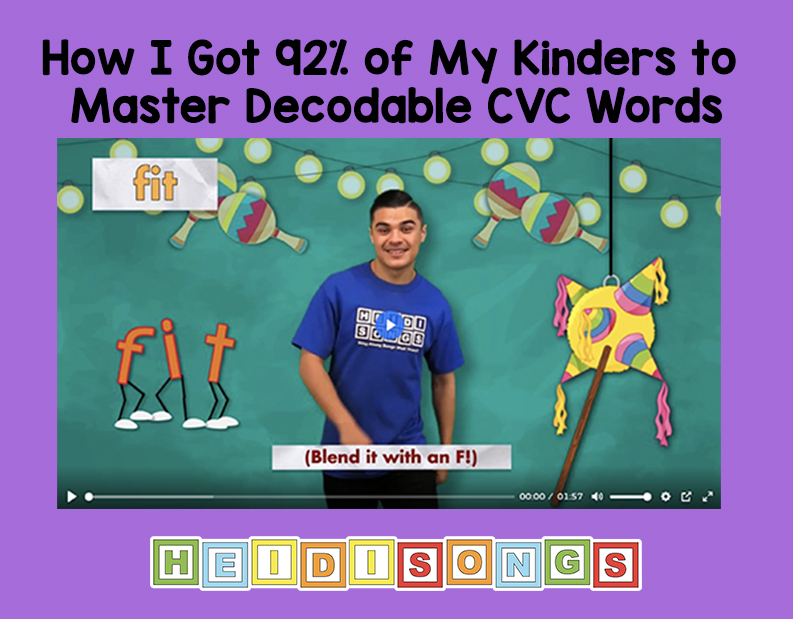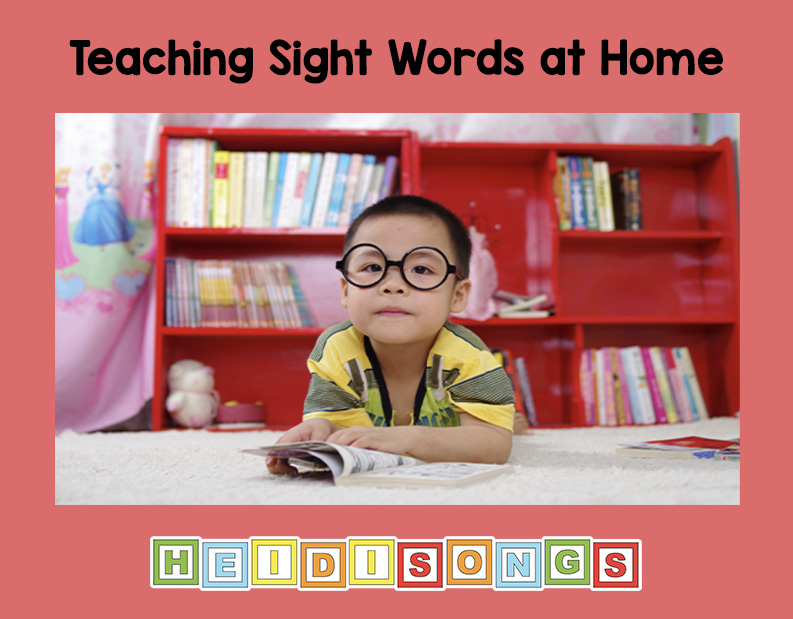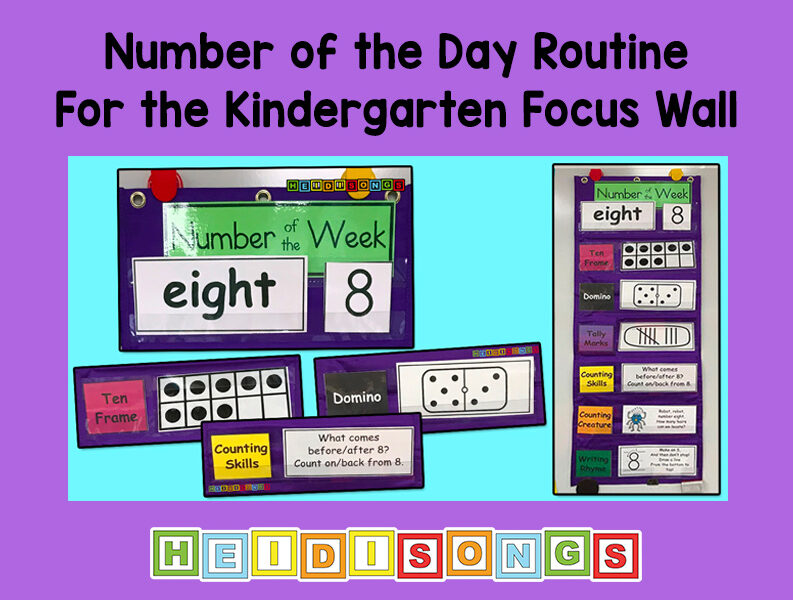Today, I will tell you how I got 92% of my Kindergarten students to master 100% of their decodable, three-letter (consonant-vowel-consonant or CVC) words primarily by singing our Word Family Songs! This method aligns perfectly with the current Science of Reading research.
The last year I taught Kindergarten in 2013, I focused on teaching my Kindergartners to sound out words using phonemic awareness. However, I only gave the children a few formal lessons on it. Instead, we sang my Word Family Songs around the beginning of November!
I was ecstatic to find that the songs were doing just what I had intended: to teach the children how to blend sounds to make a word! It even helped them learn to sound out words that were not in the songs at all!
Amazing Results, Mid-Year!
I was AMAZED at how well the children learned to sound out words simply by using the songs! The children were tested on sounding out CVC words around our 100th day of school, and even though I suspected that they were doing quite well, I really didn’t expect the level of individual success that I saw!
I had 27 students that year. The class average was 92.2% correct on the decodable CVC reading test. That was AMAZING, considering we had not even finished our second trimester, and that I had hardly done any directed lessons on sounding out words. (In the past, I did LOTS of them.) We had spent little time practicing other than sounding out words on our pocket chart chorally a couple of times a week in the morning after our calendar time. (See photo below.)

In addition to singing the songs for about ten minutes a day, we did one small group lesson on CVC words in print each week. For these, we used my CVC worksheets and other printable resources. The items that got the best results are CVC Write the Room, our CVC Cookie Sheet activities with magnetic letters, and the CVC Pockets.
The CVC Worksheets also got great results, but I think that is because I sat with the children while they did them, and had them take turns reading the words and sentences to me as they worked. Practice makes progress!
What About the Other Six Kids?
The children that did not get 100% on their CVC reading test were just a little behind!
* Three children got 9 out of 10 CVC words correct on their test. One gave an incorrect sound for one of the letters and produced the wrong word. The other two children blended the word incorrectly. But 90% correct is still EXCELLENT!
* One child got 6 out of 10 words correct but could accurately blend the sounds when I said them. Therefore, he was learning; he needed more time.
* Two other children were still struggling with the concept. One child got 4 out of 10 words correct but could also accurately blend sounds when I said the sounds. He was also on his way. Another child got 2 out of 10 items correct and needed help blending the sounds I said. However, there were other issues at play with both children.

But that wasn’t the case in 2013. To be fair, it was a higher group than I had in 2012, but certainly not the highest I’ve ever had. And this was a Title One school, with more than 50% of the students qualifying for a free lunch.
Our decodable CVC worksheets and other printable resources have always been top sellers and personal favorites of mine. Our Word Family Songs go along with these, using the same words in the CVC resources in print. I used these resources to help my students learn, but I didn’t start using them until the second trimester. We did one of the activities or worksheets once a week.
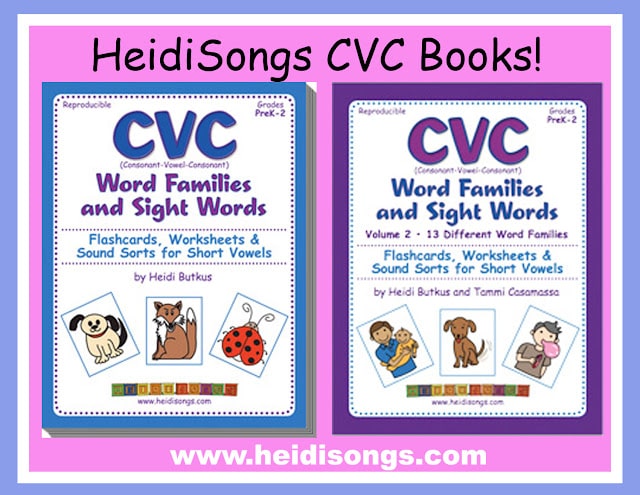
Additional Phonemic Awareness Practice
We also did the Heggerty Phonemic Awareness Program daily, and I know this practice also helped the children learn. I highly recommend it! I prefer the Pre-K Heggerty book over the Kindergarten book. The K lessons should be shorter for their attention spans and take them farther than most can achieve for the last two months. The Pre-K Heggerty book keeps the lessons short and sweet, and the tasks are all within their ability levels. And we got the same results in K as in TK using the easier book.
Adding Visual Cues and Motions to Phonemic Awareness Lessons
I recently created a set of slides with visual cues and movements to use along with the Heggerty program, which made teaching phonemic awareness virtually possible! My program differs from Heggerty in that I focus on the sounds from a single word family at a time, include images of each word, illustrate the motions, and then ask the children to sound out the printed words at the end of each slide deck.
Naturally, many children learn to sound out and read words quite efficiently without the assistance of music. But I was reaching for the children who fell below that baseline and required instruction in an alternative method. No matter what, I wanted to prevent them from GUESSING at the three-letter words by giving them the tools they needed to sound them out.
What the Word Family Songs Include
1. The songs take the steps for sounding out words and apply them to each word family song. Each song and melody is unique; they are not all written to the same tune.
2. Each verse changes to reflect a new word family word, and each one is used in a sentence.
3. There are movements to make it a more brain-friendly activity that “sticks.”
4. The musical arrangements are fun and motivating, as usual!
Check out the collection on our HeidiSongs.tv Video Streaming Site here!
Here is a song list, too:
1: Just Two Sounds
2: Little Two Letter Words
3: How Do You Sound It Out?
4: At Family Song
5: An Family Song
6: It Family Song
7: In Family Song
8: Ig Family Song
9: Ip Family Song
10: Op Family Song
11: Ot Family Song
12: Ox Family Song
13: Et Family Song
14: En Family Song
15: Eg Family Song
16: Ug Family Song
17: Ut Family Song
18: Un Family Song
19: Nonsense Words
Take a look and see how some of these songs turned out! Here is one example performed by my good friend Julie Prager’s class, looking super cute in their jammies.
There are also some free downloads of visual aids for you to use. I hold them up for the children to read and blend the words while singing the songs. I hope that you find them useful!
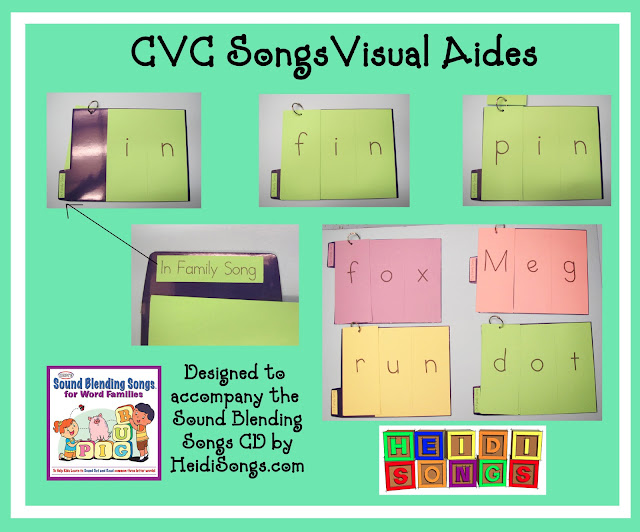
The Nonsense Word Song section was extremely helpful in getting the kids to practice sounding out random nonsense words, too. In addition, it helped me prepare my students for the nonsense word portion of the DIBELS tests.
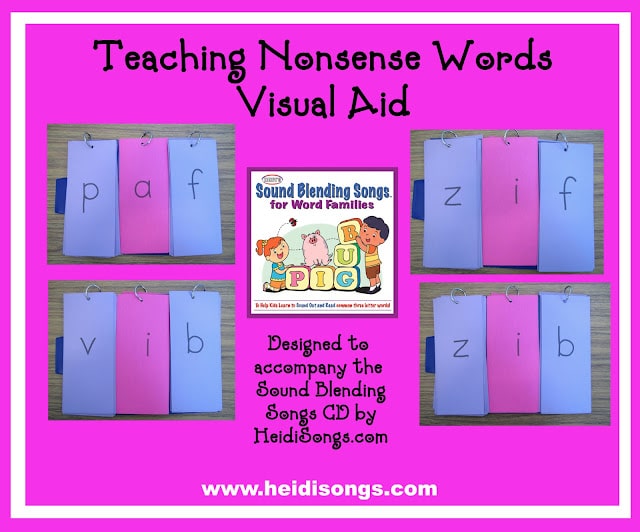
Here’s a look at more of the Word Family Song Videos!
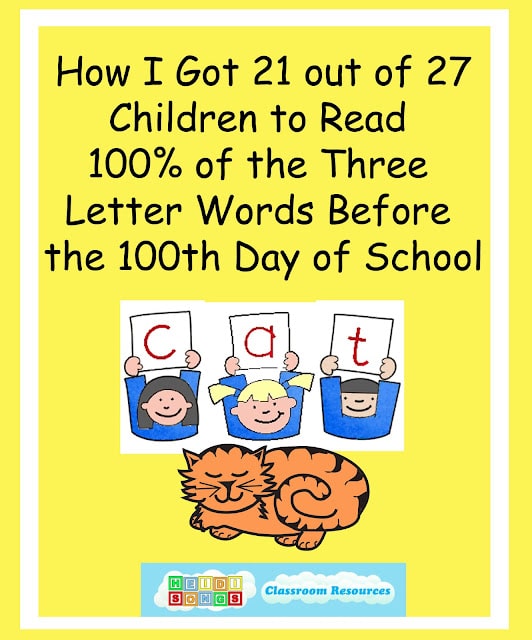
Don’t forget to SUBSCRIBE to HeidiSongs Internet Videos, and follow us Instagram, Facebook, or Twitter! Check out our main website at HeidiSongs.com, and find us on Teachers Pay Teachers right here.

